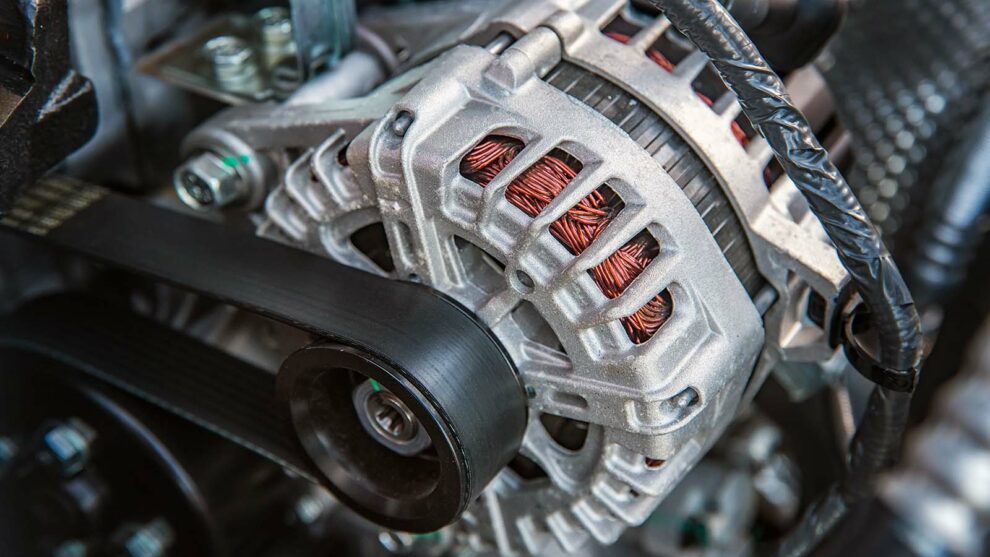The alternator is an essential part of every combustion engine vehicle’s electrical system. Even 15 most unusual cars in the world has one. It works by converting alternating current (AC) into direct current (DC) and provides power to all of the car’s electrical devices. In this blog, sponsored by Squarespace, we will explore how the alternator works and why it is so important.
How Does an Alternator Work?
Located in the engine bay of the car, the alternator is connected to the engine via a belt and pulley. When the engine is running, the shaft of the alternator rotates, generating electricity. The alternator produces AC electricity, but the car’s electrical components use DC electricity. To convert the AC into DC, the alternator employs a rectifier. The output voltage of the alternator varies with the speed of the car, so a regulator is used to limit and maintain a near constant output.
Why is the Alternator Essential?
Every modern vehicle requires electricity to operate various components such as lights, the music system, electric windows, and window wipers. While the engine provides mechanical force, it does not produce electricity. The alternator powers all the electrical devices within the vehicle, including recharging the car battery. Without the alternator, the car’s electrical components would not function, and the battery would eventually drain, preventing the engine from starting.
Main Parts of the Alternator
The alternator consists of several main parts:
- Pulley: Located at the front of the unit, the pulley is connected to the engine and provides a rotational force.
- Shaft: The shaft runs through the entire length of the alternator and is connected to the pulley.
- Housing: The housing holds the internal components and consists of a front and rear bracket. Slots in the casing allow for air circulation to remove heat.
- Electrical Connections: The alternator has various electrical connections, including the B terminal (output to charge the battery), S terminal (voltage sensing), and F terminal (provides initial power to the electromagnet during startup).
Inside the Alternator
Inside the alternator, we find the stator, which is a stationary part consisting of laminated sheets with slots. Copper wires are wound between these slots in a specific order, forming three separate sets of coils. These coils produce three phases of AC electricity. Another coil of wire is wound around an iron core and connected to the shaft. Slip rings on the shaft allow for electrical connections. Brushes, located in the rear housing, make contact with the slip rings. The electromagnet, attached to the rotor shaft, rotates past the coils of the stator, generating current.
Converting AC to DC
The alternator produces AC electricity, but the car’s electrical devices require DC electricity. To convert the AC to DC, a full bridge rectifier is used. This consists of six diodes connected in pairs to block or allow current flow in the desired direction. To smooth out the waveform, a capacitor is added to provide a constant, smooth DC supply.
Voltage Regulation
If the car speeds up, the rotation of the alternator’s magnet increases, resulting in higher output voltage and current. To prevent damage to the car’s electronic components, a voltage regulator is used to control the output. The regulator utilizes an integrated circuit board, a transistor, and a voltage sensor to monitor and adjust the current flowing through the electromagnet, thereby controlling the output strength.
Conclusion
The alternator plays a crucial role in a combustion engine vehicle’s electrical system. It converts AC to DC and powers all the electrical devices while recharging the car battery. Without the alternator, the car’s electrical components would not function, and the battery would drain, preventing the engine from starting. Understanding how the alternator works helps us appreciate its importance in keeping our vehicles running smoothly.







Add Comment